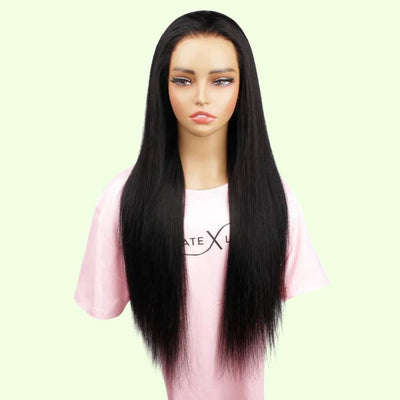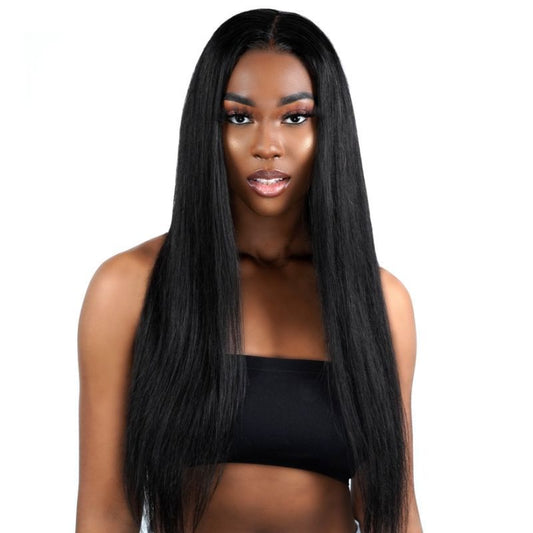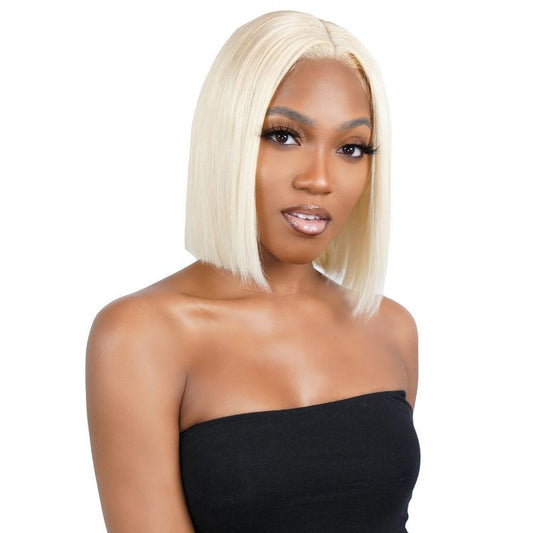1260 Memorial Drive
Atlanta, Georgia 30316
404-458-1330
The Do's and Don'ts of Caring for Headband Wigs
Mikey MoranDo your headband wigs also get rough and damaged after a few uses? Don’t worry—we have you covered!
A headband wig adds style to your chic and is relatively easy to use, making it perfect for women who can’t put enough time into styling their hair daily.
As they are often used daily, if not treated well, their lifespan is reduced. To make the most of your money spent on buying these wigs, you must know how to take care of them.
We have compiled all the dos and don’ts for keeping your headband wig in top condition.

Why Proper Care Matters?
As natural hair requires proper care, headband wigs maintenance must also be carried out carefully. It’s not only crucial for the life and quality of wigs but also for your style.
The more you take care of your wig, the better it will look on you! Here are a few reasons that emphasize the importance of caring for your headband wig.
Maintains Vibrancy & Style
Wigs, especially human hair ones, are prone to frizz. Excessive exposure to heat, using sulfate-inclusive shampoos, and even rubbing may result in frizzy strands.
Furthermore, if appropriately treated, headband wigs may retain their shine and appear dull like the original hair due to the accumulation of dirt, oils, and sun exposure.
Styling it daily may cause the loss of actual style. To avoid all such issues and make your wig ready for your daily looks, stop considering your hairpiece an accessory and treat it as your natural hair.
Take care of it as you care for your hair for a perfect hair day every day.

Ensures Longevity
The most common issue faced by people who use headband wigs daily is their short life span.
But they usually don’t know the actual reason behind it. The lack of care is the cause that reduces the life of this hair accessory.
Taking proper care of your headband wigs will make them last for months.
Your spending on the purchase will eventually transform into an investment and save you money in the long run.
Dos and Don'ts of Caring for Your Headband Wig
People are unable to take care of their headband wigs because they need more awareness and expert tips for headband wigs.
Most people don’t even consider them as an accessory that needs proper maintenance and look up.
This eventually leads to damage and brittleness just after a few uses.
To familiarize people with the essential care of headband wigs, the following dos and don’ts will keep them in top shape for a long time.

Washing
Dos:
Read the Wig Label Carefully
Most of the time, people don’t even read the care instructions mentioned on the label.
This is quite important as the label contains wig-specific instructions. So, whenever you buy a new wig, please read the instructions carefully and follow them correctly.
Detangle Priorly
Detangling your headband wig after use and before washing it will reduce friction and eventually prevent it from becoming fizzier.
To do so, use a wide-tooth comb and gently detangle it, as this will remove the loose strands and avoid further tangling.
Wash Gently
It’s important to wash your headband wig, so all you need to do is do this gently.
Avoid scrubbing and wrangling the wig, as it may cause the breakage of strands.
Wash in a Basin or Sink
Always wash your wig by submerging it in lukewarm or cold water. Be cautious with the cleaning agent you use.
Always use a gentle, sulfate-free shampoo specifically made for synthetic or human hair wigs (depending on the type of your wig).
Apply Conditioner
Always use a wig conditioner specific to the hair type to lock in moisture and keep the style intact.
This will also make styling quite convenient.
Rinse Thoroughly
After treating your wig with shampoo and conditioner, remember to rinse out all the products, as they may harm your wig in the long run. For this purpose, always use cold water and repeat the process until the water runs clear.
Don’ts:
Use Hot Water
Treating your wigs with hot water is the worst thing you can do to them. Hot water will damage the strands, cause frizz, and even melt them, especially if they’re synthetic wigs.
So, always pay special attention to the temperature of the water while washing.
Use Harsh Products
Sulfate-containing shampoos and hair products strip away moisture, making hair frizzy and dry.
These regular shampoos and conditioners usually contain sulfate as a key ingredient. So, always check the ingredient list and use products specifically curated for wigs.

Drying and Styling
Dos
Air Dry
After washing the wig, it’s time to dry it again, and there are a few protocols to follow.
Firstly, pat dry the wig with a microfiber towel. Then, let it dry on the wig stand or mannequin head to maintain its shape.
Style at Low heat Settings
Set the heat settings at the lowest point while using heat styling tools such as flat irons or curling irons.
The cherry on top is to use a heat protectant before exposing your wig to such tools.
Use Satin or Silk Scarf
For a bouncy look and loose curls, the better approach is to use satin or silk scarves instead of heating tools or rollers.
This will give more defined curls, minimize frizz, and be gentle on your hair.
Don’ts
Roughly Drying with Towel
Headband wigs, especially human hair ones, are quite delicate, and harsh rubbing may disrupt the fiber alignment, leading to a frizzy appearance.
Towel drying may also damage the protective outer layer called the “cuticle,” causing your wig to lose its shine and ultimately reduce its life span.
Use High Heat
Exposing the wigs to high heat, which is usually generated by heat styling tools, will damage the hair fibers, and hair strands will lose their grip quickly.
Detangle While Wet
It’s not recommended to detangle hair when wet; the same goes for wigs. Detangling them when they are wet may cause breakage.

General Maintenance
Dos
Store Properly
When not in use, store your wig on a wig stand or a mannequin head so that the style and shape can remain the same.
For a more extended period, store it in a silk or satin scarf or in any breathable box to avoid dust accumulation.
Apply Leave-in Conditioner
After every one to two weeks, apply a small amount of leave-in conditioner. It will refresh the hair and help maintain adequate moisture on the cuticle.
Give Rest to Your Wig
If you want your headband wig to go long, alternatively, use two at a time. Use the first one for a week, store it after washing, and then use the second one.
This is a secret hack to extend the life of your wigs.
Don’ts
Sleep In Your Wig
While sleeping, the contact of hairs with pillows and sheets creates friction that is not good for overall hair health.
The same rule applies to the headband wigs. So, don’t go to bed with your wigs on the head to avoid tangling and matting.
Excessive Use of Products
Styling products such as hair sprays, gels, mousses, and leave-in conditioners are often used to hold the style, but overusing them may cause the ingredients to build up on the wig fibers.
Due to this coating of ingredients, the appearance seems dull, and the shine fades.
Pro Tip: Avoid using wigs on beaches and swimming pools as the salinity and chemicals affect the hair strands badly. Furthermore, avoid direct exposure to the sun, as the ultraviolet rays may cause irreversible damage to your wig.

Keep Your Headband Wigs Alive!
Wigs are delicate accessories that require proper care and maintenance.
This article covers all the dos and don’ts for maintaining your wigs, but if you’re still unsure, consult professionals to seek help for any particular issue.
It’s also recommended to ask any health professional before using headband wigs if you’re sensitive to any kind of scalp allergy or suffering from any serious medical condition.
Are you tired of spending hours styling your hair every morning?
Do you want a seamless, natural-looking finish that will have everyone thinking it’s your natural hair?
Look no further! Headband wigs like this Body Wave Headband Wigs are designed carefully to give you the utmost comfort and ventilation, making them ideal for everyday wear.

























1 comment
This guide is really helpful for caring for headband wigs! I’m curious, what’s your favorite tip for maintaining the shine and longevity of your wig?